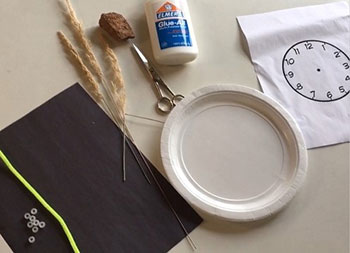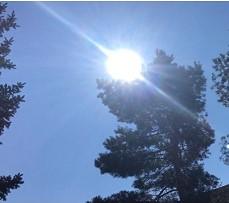Categories
TAKE AND MAKE: Tween Twist: Dragon Eggs
Pick up your Take and Make supplies at area PPLD libraries starting Friday, Oct. 9, 2020
Supplies:
- Styrofoam egg
- Box of thumbtacks
- Glue
- Toothpick
Optional supplies:
- Sharpie markers, nail polish, or rhinestones
Watch the “how to” video on PPLD TV https://youtu.be/YyPNAoIxy3w
Directions:
- Start the dragon egg at the very bottom of the Styrofoam egg. You can glue this “starter” tack in for stability.
- Insert tacks into the egg so that they overlap the “starter” tack and each other. The tacks overlap like fish scales.
- Keep adding tacks, overlapping them as you move up the egg and cover it with tacks.
- You will put a final tack at the very top. You can also glue this tack to help it stay in.
- You can add glue to any tacks that feel loose or like they might fall out. Use a toothpick to push the glue in where it needs to go.
- If desired, you can use colored sharpies, nail polish, and/or rhinestones to further decorate your egg.
Submit a recipe to Pikes Peak Library District's A Harvest of Recipes digital cookbook! Use this link to upload your recipe: https://ppld.librariesshare.com/ppldrecipes/
Some Fun Facts about Grilled Cheese
❖ Though similar recipes were mentioned in ancient Roman texts, the grilled cheese sandwich was technically invented in France in 1910, known as the Croque Monsieur.
❖ However, most experts agree that the first grilled cheese sandwiches were made in the United States in the 1920s when Otto Frederick Rohwedder invented a bread slicer that made distributing white bread easy and affordable.
❖ Shortly before that, processed cheese has been patented by James L. Kraft, whose pasteurizing process ensured that cheese would not spoil, even when transported great distances (the first Kraft plant opened in Illinois in 1914).
❖ During WWII, Navy Cooks prepared open faced grilled cheese sandwiches on Navy ships as instructed by government issued cookbooks. These sandwiches were called “American Cheese Filling Sandwiches.”
❖ In 1949, people finally began to add the second slice of bread to the top of this sandwich to make it more filling, and the sandwich we all know and love was born.
❖ The name “grilled cheese” wasn’t used until the 1960s; before then it was called “toasted cheese” or “melted cheese” sandwiches.
❖ Approximately 3/4 of people who buy sliced cheese make at least one grilled cheese sandwich per month.
❖ National Grilled Cheese Day is celebrated on April 12th!
Recipes:
Please use adult help with slicing or heating!
- Allison’s Grilled Cheese Sandwich Ingredients: Bread Butter Cheese slices (thin) Optional (onion, apple, kale) Stone ground mustard --experiment with your own ingredients— Instructions: Butter bread slices on one side, flip slices over and add mustard to insides of bread. Stack up ingredients between bread slices. Place in heated frying pan (low to medium heat); cover with lid. Cook on low to med. heat until bread is toasty and golden on one side; flip over until done. Cheese should be melted.
- Betty’s Gluten and Dairy Free Grilled Cheese Sandwich Ingredients: Gluten-free bread Vegan butter spread Sliced vegan “cheese” Avocado (optional) Mustard Instructions: Butter bread slices on one side, flip slices over and add sliced cheese. Scoop out avocado and spread (if desired); add mustard to top slice. Place in heated frying pan (low to medium heat); cover with lid. Cook on low to med. heat until bread is toasty and golden on one side; flip over until done. Adjust heat as needed. Cheese should be melted.
- Brady’s Grilled Cheese Ingredients: Whole wheat bread (or bread of your choice) Butter Garlic clove (broken open) Mayonnaise Cheese slices (American, grated cheddar, or your choice) Instructions: Cover all sides of bread with mayonnaise. Heat non-stick electric griddle; carefully rub with butter and clove of garlic. Place one slice of bread on hot pan. Add cheese; top with other slice of bread. Cook until bread is toasty and golden on one side; flip over until done. Cheese should be melted.
- Amanda’s Easy Creamy Microwave Tomato Soup in a Mug Ingredients: 7 oz. diced tomatoes ½ tbsp. tomato paste ½ cup broth 1/8 cup light cream Optional (to taste): sweet yellow onion, basil, pesto, salt and pepper Supplies: Mug Blender Microwave Instructions: Add all ingredients together in blender. Blend until smooth. Transfer soup into a microwave safe mug. Microwave for one minute. Let cool and enjoy!
- Athena’s Cake in a Mug Recipe Ingredients: 1/4 cup flour 2 tbs. sugar 1/2 tsp. baking powder A pinch of salt 1/4 cup milk 1 tbs. oil 1/2 tsp vanilla extract Instructions: Pour the dry ingredients into your mug and mix. Add the wet ingredients, and then mix until there are no large clumps or dry flour at the bottom of the mug. Microwave for 90 seconds. (You may need to adjust this 10 seconds in either direction, based on your microwave's power.) Be careful pulling the hot mug out of the microwave! At this point, you could add some icing or a scoop of ice cream, or eat your cake plain. Enjoy!
Citations and Resources: “Kids Vs. Science: Making The Greatest Grilled Cheese;” Mental Floss video; https://youtube.com/watch?v=tAN6vC7-YeA “How chemistry creates the perfect, gooey grilled cheese sandwich;” PBS News Hour; http://pbs.org/newshour/science/grilled-cheese-chemistry-forever “What a cheesy sandwich looks like in 15 places around the world;” Insider; http://insider.com/grilled-cheese-around-the-world-2018-10 “History of the Grilled Cheese Sandwich;” Daily Dish Magazine; http://foodiefriendsfridaydailydish.com/national-grilled-cheese-month-h… “The History of the Grilled Cheese;” The Committed Pig blog; http://www.thecommittedpig.com/the-history-of-the-grilled-cheese-and-ho… “The History of the Grilled Cheese Sandwich;” http://HowStuffWorks.com; http://www.recipes.howstuffworks.com/history-of-grilled-cheese.htm
Supplies:
In Take and Make kit (pick up a kit starting 9/11/20 at any PPLD Library, while supplies last)
- UV beads
- Pipe cleaner
- Paper plate
- Pencil
- Black construction paper
- Template pdf below

You supply:
- Glue
- Scissors
- Clock face template (pdf to print below)
- Natural objects from outside: rocks, weeds, flowers, leaves, etc.
Directions:
- UV beads illustrate some of the harmful effects of the sun and therefore, why we use sunscreen. UV light is one type of light from the sun. We can’t see it, but insects and birds can. While this UV light can help our bodies produce Vitamin D, too much of it can also cause sunburn or skin damage. Take the UV beads in your kit and string them on a pipe cleaner to make a bracelet. Go outside to watch them react to the UV rays – even on a cloudy day. You might also want to experiment with sunscreen, sunglasses, or windows and see what happens!
- You can also use the power of the sun, construction paper, and natural objects to create a work of art. Take your piece of paper and place it in a sunny place. You may need to weight it down. Place natural objects on the paper and leave it all in the sun for several hours. The UV rays of the sun help break down the dye in the paper creating your design. We found that we had to tape down some of the objects so they didn’t blow away. If you use tape, be careful that it doesn’t show.
- Next, you can make a sundial clock. Decorate the plate if you’d like. Cut out and glue the clock face to the back side of the plate. Poke the pencil through the center of the plate and take it outside. You’ll need to place the clock with the “12” facing north to determine the correct time. Watch how your clock tells time during the day.
- Watch these solar projects at: https://youtu.be/fHE8QoUau5U?list=PLMEg2Dd0dSFctLfDQxsL5SmuE8zkwQFmu
These activities are based on:
http://solar-center.stanford.edu/activities/UVBeads/UV-Bead-Instruction…
https://www.scholastic.com/parents/school-success/learning-toolkit-blog…
https://www.raisingarizonakids.com/2015/06/how-to-make-sundial-clock/



 Ruth Holley Library will be temporarily closed for approximately one week starting Mon., Dec. 2 to complete roof repairs.
Ruth Holley Library will be temporarily closed for approximately one week starting Mon., Dec. 2 to complete roof repairs.